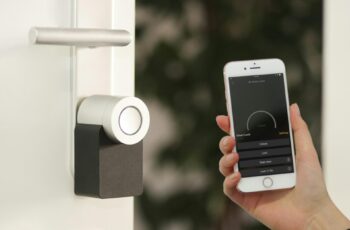The advent of smart home technology has ushered in an era of unprecedented convenience and security, with smart doorbells at the forefront of this revolution. These innovative devices, combining traditional doorbell functionalities with advanced surveillance capabilities, have transformed how we interact with our homes’ entry points. This comprehensive guide delves into the workings of smart doorbells, explores the Home Zone Security Smart Doorbell Camera, examines the practicality of answering doorbells via smartphones, and reviews the various power sources available for these devices.

How Smart Doorbells Work?
At their core, smart doorbells are an ingenious blend of conventional doorbells and modern technology. They are designed to connect seamlessly to your home’s Wi-Fi network, enabling live video streaming directly to your smartphone, tablet, or any internet-enabled device. When someone presses the doorbell or motion sensors are triggered, the device sends a real-time alert to your device. This functionality allows homeowners to see and communicate with visitors from anywhere in the world, offering an unmatched level of convenience and security.
The Home Zone Security Smart Doorbell Camera: A Closer Look
Among the plethora of smart doorbell options, the Home Zone Security Smart Doorbell Camera stands out for its exceptional video quality and robust security features. Equipped with high-definition cameras, night vision, two-way audio, and motion detection alerts, this device ensures homeowners can monitor their doorstep effectively. The ability to discern visitors and monitor your entrance round the clock, coupled with the convenience of remote communication, positions the Home Zone as a top contender in the smart doorbell market.
For those seeking to elevate their home security with cutting-edge technology, the Ring Battery Doorbell Plus offers expanded Head-to-Toe HD+ Video & Color Night Vision, ensuring peace of mind through enhanced front door security. Its wireless design simplifies installation, while compatibility with smartphones allows homeowners to monitor their doorstep from anywhere.
Leveraging Smartphones to Answer Doorbells
The integration of smartphones with smart doorbells represents a leap forward in home security technology. This feature empowers homeowners to interact directly with visitors, couriers, or potential intruders without physically being at the door. The convenience of handling deliveries, greeting guests, or deterring unwanted visitors through your smartphone underscores the practical benefits of smart doorbells, providing a versatile tool for managing home security.
Diverse Power Sources for Smart Doorbells
Smart doorbells can be powered through various means, each offering unique advantages:
Battery-Powered:
Offering ease of installation and flexibility, battery-powered doorbells are ideal for those seeking a hassle-free setup. Regular charging or battery replacement is necessary, depending on usage.
Hardwired: For continuous operation without the need for battery changes, hardwired smart doorbells are connected to your home’s existing doorbell wiring. This option may require professional installation but guarantees constant readiness.
Solar-Powered:
Solar-powered smart doorbells harness solar energy to recharge their batteries, offering an eco-friendly solution that minimizes manual recharging efforts, especially in sunny locales.
Plug-In Adapters:
Some models come with plug-in adapters, allowing them to draw power from standard electrical outlets. This convenient solution, however, may limit placement options based on outlet proximity.
Expanding the Scope of Smart Doorbells
Beyond their primary function, smart doorbells serve as the cornerstone of a broader smart home ecosystem. Their ability to integrate with other smart devices—such as locks, lights, and security systems—enriches the smart home experience, enabling automated routines and enhanced security measures. For instance, a smart doorbell can trigger lights to deter potential intruders or unlock the door for recognized visitors, showcasing the versatility and integration capabilities of these devices.
Navigating Challenges and Embracing Future Innovations
While smart doorbells offer numerous benefits, potential challenges such as hacking risks and privacy concerns remain. Choosing devices with strong security protocols and keeping software updated are crucial steps in mitigating these risks. As technology advances, future iterations of smart doorbells are expected to bring even more sophisticated features, such as improved AI for facial recognition and enhanced integration with smart home platforms.
For residents of apartments or rental properties, the Ring Peephole Cam offers a smart video doorbell solution that combines HD video, two-way talk, and easy installation without the need for complex wiring. This device replaces your traditional peephole with a camera to monitor your front door discreetly.
Conclusion
Smart doorbells represent a significant advancement in home security and convenience. With features like live video streaming, two-way audio, and motion detection alerts, these devices provide homeowners with peace of mind and flexibility. Whether you prioritize video quality, ease of use, or integration capabilities, there’s a smart doorbell solution to meet your needs, making them a wise investment for any contemporary home.
FAQs:
Smart doorbells are not just a trend but a practical upgrade to home security systems, offering an effective blend of security, convenience,
and technological innovation. As these devices continue to evolve, they will undoubtedly play a pivotal role in shaping the future of smart home security.


